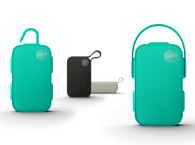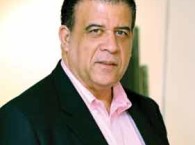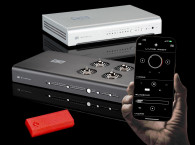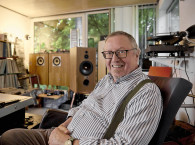Tube Amplifier Design
Brothers collaborate on a new audio system with a classic look
SHANNON BECKER: Tell us a little about your background. Where are you located? Where and what did you study?
ADAM CLARKSON: I have been working in product development for the past 10 years in Franklin, IN, for my father’s company, Agri-Tronix, where we manufacture agricultural electronics and also professional tournament fishing scales. Yes, tournament fishing is a sport and we provide the scales necessary to decide the winner. I attended Indiana University for two years after high school where I studied graphic design and pre-engineering. After my brief tour of college life, I bounced around from bartending job to bartending job before deciding to come to work for my father. It’s truly been a blessing to work for the man I most admire, I’ve learned more from him than I could ever describe. My brother, Ben, began working with me about two years ago after he graduated from the University of Southern Indiana with a Bachelor’s degree in Fine Arts.
SHANNON: What is your current occupation?
ADAM: Sales, marketing, project manager, graphic designer, technician, and anything else that needs to be done.
SHANNON: How did your interest in audio electronics develop?
ADAM: I’ve always been interested in electronics and always loved good audio. There was an allure to vacuum tubes, so we started experimenting and we really think that we’ve created something special.

SHANNON: How did you and your brother Ben get involved with Kickstarter? What about it appealed to you?
ADAM: The ClockOS was our first kickstarter project. I had a friend who had decent success on Kickstarter, and I thought, “Hey I could do that.” So we set out to come up with a project to put on Kickstarter and test the waters. We came up with the ClockOS, which had mild success. We learned so much from doing that project. And, we did some things wrong with that project that really held it back from being great. The idea of Kickstarter is really neat, and I think that a lot of people want to just help out. They want to be involved in something new, get in on the ground floor, so to speak. Even though the backers are not
investing in the company, they still have this desire to be involved. The all-or-nothing funding was the one thing that really convinced us to go with them over the other crowd-funding sites like indiegogo.com.
SHANNON: In what stage of development is the ClockOS?
ADAM: Unfortunately, this project had to be retired as the manufacturing cost was just way too high. The machine shop that originally quoted the aluminum for us came back after the project ended with a price that was three times as high. We then had to scramble to find a new shop and what we saved in money, we sacrificed in quality. We spent many weekends reworking the machined parts, hand polishing and surface prepping each one to a show quality finish. If you added our time to the cost of the ClockOS project (which any good business owners should) we would have lost money on the ClockOS project. We learned from our first project and took it to the BlueTube amplifier to make sure it was a success. It worked.

SHANNON: Share some details about your company, BlueTube Audio. What made you and Ben go into business together?
ADAM: BlueTube Audio’s niche is “functioning art.” We want to design products that are art pieces but have function in modern society. Our new project is the BlueTube Audio vacuum tube amplifier. As for our partnership, we were already working together and, in my opinion, we make a great team. We are brothers so we do have our battles, they are usually small though, and we always work through them.
SHANNON: Describe the BlueTube Audio vacuum tube amplifier and its current status.

ADAM: We decide to put the amplifier on Kickstarter as it really is a good platform for raising funds for your initial production run. We needed to have custom sheet metal plates punched, powder coated, and silkscreened for the back panels. The front panels are made of brushed stainless steel and require specialized machinery to punch and cut them. The internal chassis is really a marvel of sheet metal bending that I designed, and I am pretty shocked the sheet metal shop said they could bend them.
We have also three separate PCBs in the unit. The main board is populated with the tube sockets, the capacitors, the resistors, and the other fun components that are required for a vacuum tube amplifier. The secondary PCB has all the inputs and DC voltage circuitry on it. This board also has the USB port attached with smart charger circuitry.

The circuitry automatically detects the proper voltage and current for your USB device, whether it’s an Samsung Galaxy or an iPad, we can give the device all the power it wants. This secondary PCB also has all the Bluetooth circuitry attached to it. The third board is a small one, but it is connected to the input selector switch and distributes the input signal to the amplifier and then out to your speakers.
All these things require quantity orders that we would not have been able to fund without the Kickstarter program. Now that we have the start-up capital, we can order more parts than we need and actually have inventory on the shelves—about 10 times as much inventory in some cases. Currently, production of the first units is in full swing, and we are constantly ordering parts.
SHANNON: The amplifier’s old-world look camouflages some very modern audio electronics. Why choose this combination?

ADAM: Because it looks awesome and sounds great! I love the look of the old-time tombstone radios and the handcrafted woodwork. The warm glow of the vacuum tubes. The reflection of the glass and metal. We don’t put plastic on our units because plastic looks cheap. Ben is the woodworker, and he did an amazing job handcrafting these units.
As for the new world technology, well, we don’t really want to sacrifice our convenience either. Why not have both? Great sound and the convenience of Bluetooth.
SHANNON: Do you have any advice for audioXpress readers who are thinking of building their own sound systems?
ADAM: Be careful when working with tube amplifiers. The capacitors can take hours to fully discharge and even when unplugged they can give you quite a jolt. Also, don’t be afraid to experiment.
SHANNON: Are you planning any other speaker-related projects?
ADAM: Yes, Bluetooth and stereo. That’s all that I can say right now.
SHANNON: Where do you see the audio industry 10 years from now?
ADAM: Much as it is now; however, with the shift to digital in the last few years, there has been some sacrifice of quality. I foresee people crying for better quality. Many people, including myself, love the convenience of having their entire music library in their pocket. But I’ve noticed that I don’t buy albums like I used to. I have the shuffle bug or the skip bug and I don’t listen to a whole album through and through like I used to. I guess this isn’t really a prediction just a complaint of something that I find missing. I miss the collection of a music library. I miss sitting down and listening to an entire album. I miss the sound of good music and the music sounding good. We’re seeing a shift to better things. I just can’t say where we will end. aX






